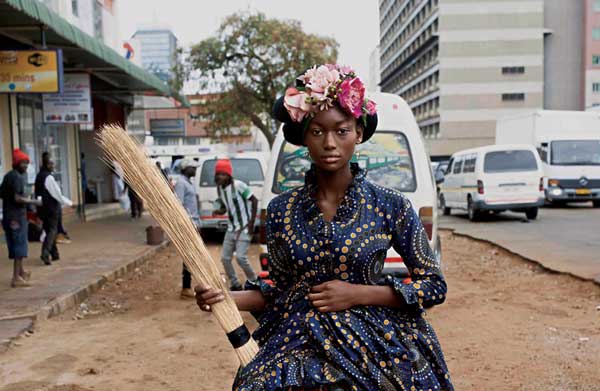
BY NYADZOMBE NYAMPENZA ROOTS and Routes is the maiden exhibition at a new cultural venue, Pikicha Gallery that recently opened its doors at Helensvale shopping centre in Harare.
The exhibition, curated by former National Gallery of Zimbabwe executive director, Doreen Sibanda, features the work of siblings Tamary and Natasha Kudita.
The joint exhibition is a showcase of photography by Sony World Photography award-winner Tamary and digital fine art by her younger sibling Natasha.
It was officially opened last week by the gallery founder Fadzai Mangoma, and guest of honour, the Sport, Arts and Recreation minister Kirsty Coventry.
Although Tamary and Natasha’s artworks complement each other in tone and scale they, however, diverge in thematic approach.
The rhyming nouns in the title reflect the dynamism between two gifted sisters who share a similar passion, but uniquely express their individuality as they grapple with the notion of identity.
Tamary’s work is driven by the quest to discover and unpack a complicated heritage that contributes to her layered identity as an African woman.
The inspiration came after she discovered that one of her grandparents was married to a Caucasian.
- Chamisa under fire over US$120K donation
- Mavhunga puts DeMbare into Chibuku quarterfinals
- Pension funds bet on Cabora Bassa oilfields
- Councils defy govt fire tender directive
Keep Reading
She explores her ideas via graceful solo portraits representative of young, mature and older black women.
The sitters are dressed in elaborate costumes that mirror Victorian tailoring, while the fabric reflects ethnic colours and design motifs.
Additional symbolism is embedded in some images by having the subject hold traditional implements such as a broom, cooking sticks and a clay pot.
Tamary’s models stand as proxy for her own body.
The different images can be seen as self-portraits revealing the artist’s obsession with uncovering and embracing the Caucasian side of her ancestry.
Through the African Victorian series, body as an Archive, Victorian Armour and other works, the mood is bold, defiant and assertive as Tamary stands resplendent in her complete heritage.
While Tamary’s work is introverted, her sister’s artworks project an outgoing persona who might be her real self or aspirational.
Natasha’s titles and setting reflect mobility and reaching out to the external such as Kumusha, Mbare and Rwendo.
Natasha’s quest to reclaim the collective identity brings the viewer to odorous public spaces where dust mingles with sweat.
The broad perspective encompassing the scene is accommodating and inclusive.
Unlike her sister’s staged and brooding individuals, Natasha depicts a community interacting in vibrant social settings.
The abstract gaze in the younger Kudita’s work confers anonymity, in a way that creates a sense of oneness.
The concept of the exhibition plays off the notion of sibling rivalry as both sisters compete for attention.
The older sister is clearly more accomplished due to the sum of her exhibitions and several awards under her belt.
A recent graduate, Natasha, however, charms the viewer with work that reaches out to the other with empathy.
One sister appears to answer the question: Who am I? while the other seems to be posing the question: Who are we?
The exhibition curator described the questions as complementary viewpoints.
The show intersects Tamary’s introspective, meditative and non-conformist point of view with Natasha’s interactive, less self-regarding, and inclusive approach.
In Roots and Routes, identity is presented as both individual and a social constructs.
Pikicha Gallery has been designed as a venue that doubles as a working space for creatives.
The immersive setup encourages prolonged contemplation in a relaxed atmosphere.
The only drawback is the traditional framing of prints behind glass to protect their delicate surface.
Shadowy reflections distract the viewer as they skitter across the polished glass like impish ghosts parroting the gestures of the audience.
A haunting reminder, perhaps, that there is more than meets the eye.
- Follow us on Twitter @NewsDayZimbabwe










